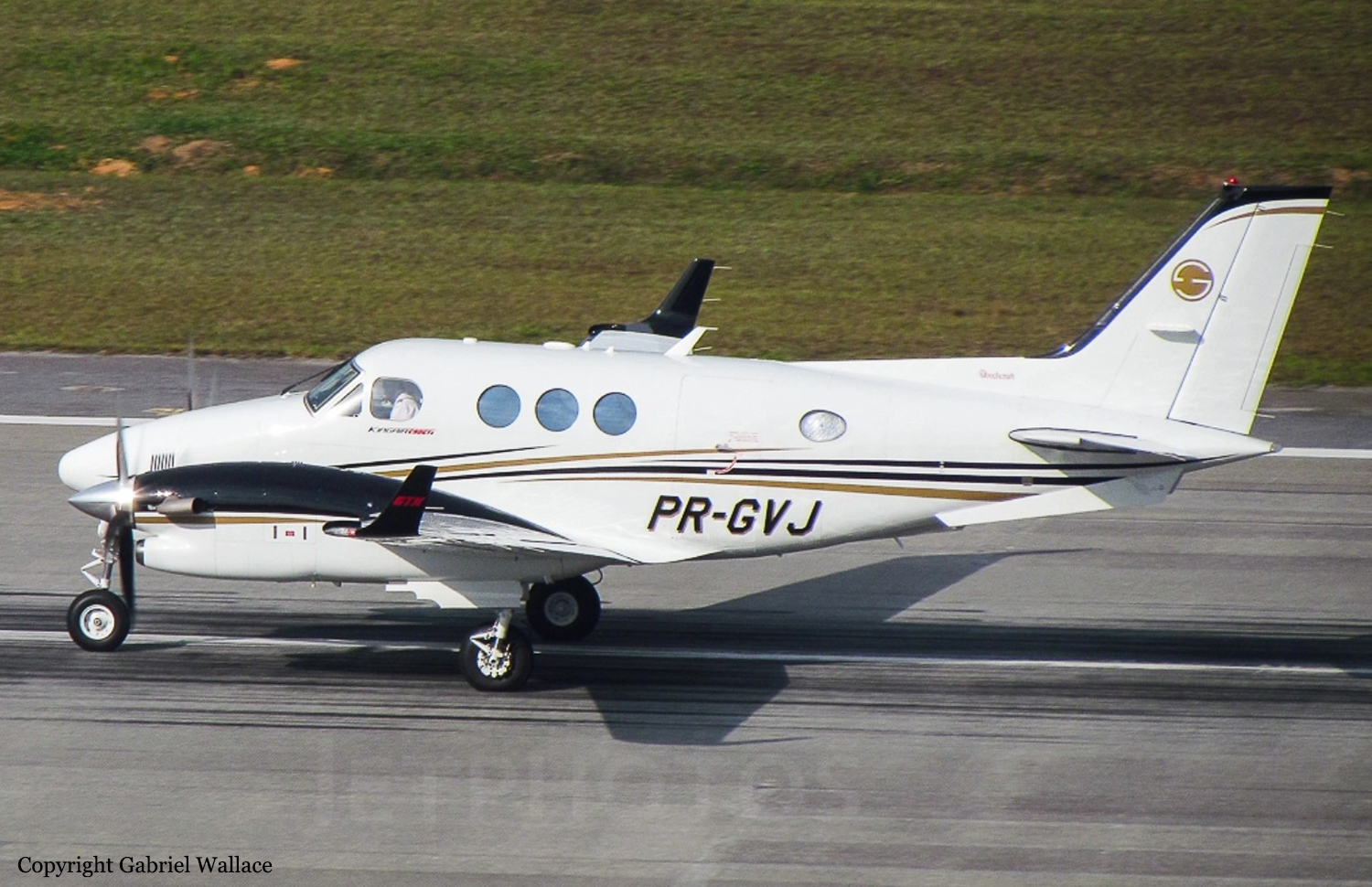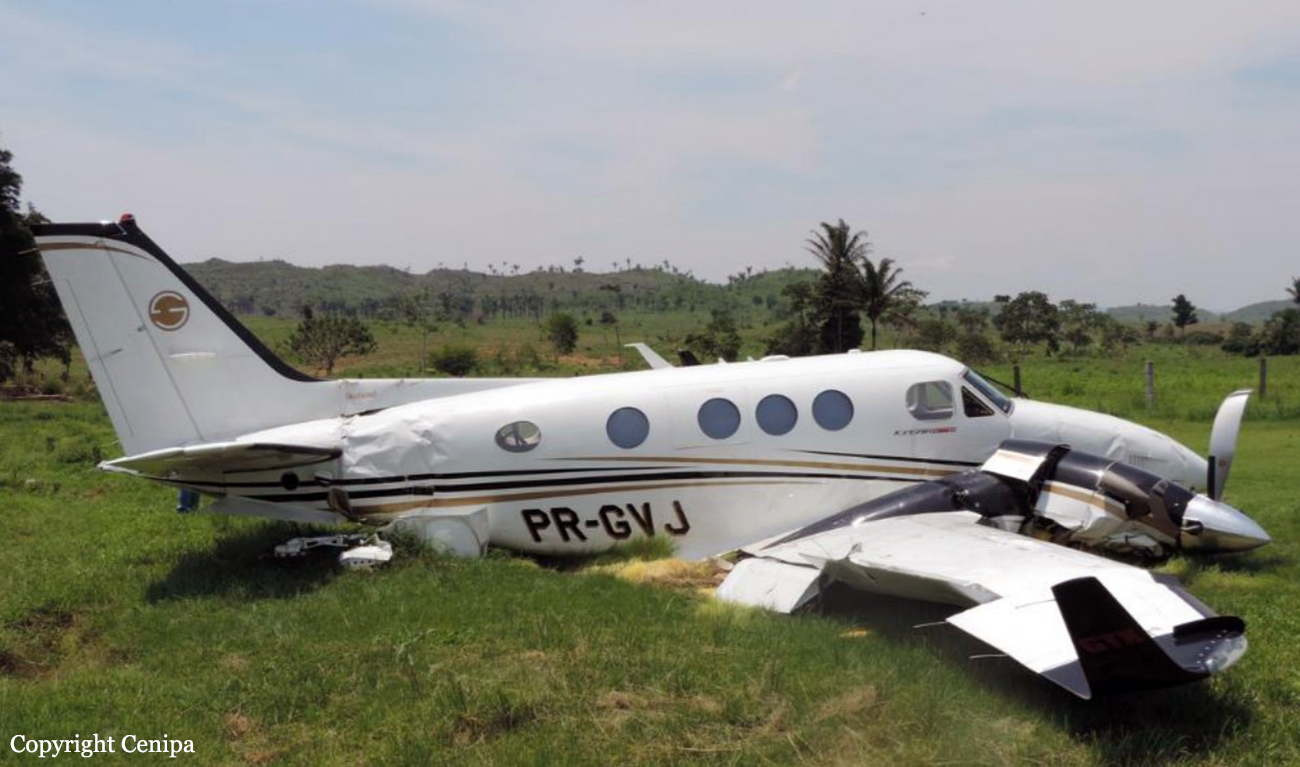Country
Crash of a Beechcraft C90GT King Air near Caieiras: 1 killed
Date & Time:
Dec 2, 2019 at 0602 LT
Registration:
PP-BSS
Survivors:
No
Schedule:
Jundiaí – Campo de Marte
MSN:
LJ-1839
YOM:
2008
Crew on board:
1
Crew fatalities:
Pax on board:
0
Pax fatalities:
Other fatalities:
Total fatalities:
1
Captain / Total hours on type:
211.00
Circumstances:
The pilot departed Jundiaí-Comandante Rolim Adolfo Amaro Airport at 0550LT on a short transfer flight to Campo de Marte, São Paulo. While descending to Campo de Marte Airport, he encountered poor weather conditions and was instructed by ATC to return to Jundiaí. Few minutes later, while flying in limited visibility, the twin engine airplane impacted trees and crashed in a wooded area located in Mt Cantareira, near Caieiras. The aircraft was destroyed by impact forces and a post crash fire and the pilot, sole on board, was killed.
Probable cause:
The accident was the consequence of the combination of the following factors:
- Attention – undetermined.
It is likely that the pilot has experienced a lowering of his attention in relation to the available information and the stimuli of that operational context in face of the adverse conditions faced.
- Attitude – a contributor.
It was concluded that there was no reaction to the warnings of proximity to the ground (Caution Terrain) and evasive action to avoid collision (Pull Up), a fact that revealed difficulties in thinking and acting in the face of an imminent collision condition, in which the aircraft was found.
- Adverse meteorological conditions – a contributor.
The clouds height and visibility conditions did not allow the flight to be conducted, up to SBMT, under VFR rules.
- Piloting judgment – a contributor.
The attempt to continue with the visual flight, without the minimum conditions for such, revealed an inadequate assessment, by the pilot, of parameters related to the operation of the aircraft, even though he was qualified to operate it.
- Perception – a contributor
The ability to recognize and project hazards related to continuing flight under visual rules, in marginal ceiling conditions and forward visibility, was impaired, resulting in reduced pilot situational awareness, probable geographic disorientation, and the phenomenon known as " tunnel vision''.
- Decision-making process – a contributor.
The impairment of the pilot's perception in relation to the risks related to the continuation of the flight in marginal safety conditions negatively affected his ability to perceive, analyze, choose alternatives and act appropriately due to inadequate judgments and the apparent fixation on keeping the flight under visual rules, which also contributed to this occurrence.
- Attention – undetermined.
It is likely that the pilot has experienced a lowering of his attention in relation to the available information and the stimuli of that operational context in face of the adverse conditions faced.
- Attitude – a contributor.
It was concluded that there was no reaction to the warnings of proximity to the ground (Caution Terrain) and evasive action to avoid collision (Pull Up), a fact that revealed difficulties in thinking and acting in the face of an imminent collision condition, in which the aircraft was found.
- Adverse meteorological conditions – a contributor.
The clouds height and visibility conditions did not allow the flight to be conducted, up to SBMT, under VFR rules.
- Piloting judgment – a contributor.
The attempt to continue with the visual flight, without the minimum conditions for such, revealed an inadequate assessment, by the pilot, of parameters related to the operation of the aircraft, even though he was qualified to operate it.
- Perception – a contributor
The ability to recognize and project hazards related to continuing flight under visual rules, in marginal ceiling conditions and forward visibility, was impaired, resulting in reduced pilot situational awareness, probable geographic disorientation, and the phenomenon known as " tunnel vision''.
- Decision-making process – a contributor.
The impairment of the pilot's perception in relation to the risks related to the continuation of the flight in marginal safety conditions negatively affected his ability to perceive, analyze, choose alternatives and act appropriately due to inadequate judgments and the apparent fixation on keeping the flight under visual rules, which also contributed to this occurrence.
Final Report:

Crash of a Beechcraft 65-A90 King Air in Dillingham: 11 killed
Date & Time:
Jun 21, 2019 at 1822 LT
Registration:
N256TA
Survivors:
No
Schedule:
Dillingham - Dillingham
MSN:
LJ-256
YOM:
1967
Crew on board:
1
Crew fatalities:
Pax on board:
10
Pax fatalities:
Other fatalities:
Total fatalities:
11
Captain / Total hours on type:
214.00
Aircraft flight hours:
15104
Aircraft flight cycles:
24569
Circumstances:
On June 21, 2019, about 1822 Hawaii-Aleutian standard time, a Beech King Air 65-A90 airplane, N256TA, impacted terrain after takeoff from Dillingham Airfield (HDH), Mokuleia, Hawaii. The pilot and 10 passengers were fatally injured, and the airplane was destroyed. The airplane was owned by N80896 LLC and was operated by Oahu Parachute Center (OPC) LLC under the provisions of Title 14 Code of Federal Regulations (CFR) Part 91 as a local parachute jump (skydiving) flight. Visual meteorological conditions prevailed at the time of the accident. OPC had scheduled five parachute jump flights on the day of the accident and referred to the third through fifth flights of the day as “sunset” flights because they occurred during the late afternoon and early evening. The accident occurred during the fourth flight. The accident pilot was the pilot-in-command (PIC) for each of the OPC flights that departed on the day of the accident. The pilot and 8 of the 10 passengers initially boarded the airplane. These eight passengers comprised three OPC tandem parachute instructors, three passenger parachutists, and two OPC parachutists performing camera operator functions. The pilot began to taxi the airplane from OPC’s location on the airport. According to a witness (an OPC tandem instructor who was not aboard the accident flight), the two other passengers—solo parachutists who had been on the previous skydiving flight and were late additions to the accident flight—“ran out to the airplane and were loaded up at the last minute.” The pilot taxied the airplane to runway 8 about 1820, and the airplane departed about 1822. According to multiple witnesses, after the airplane lifted off, it banked to the left, rolled inverted, and descended to the ground. One witness stated that, before impact, the airplane appeared to be intact and that there were no unusual noises or smoke coming from the airplane. A security camera video showed that the airplane was inverted in a 45° nose-down attitude at the time of impact. The airplane impacted a grass and dirt area about 630 ft northeast of the departure end of the runway, and a postcrash fire ensued. The airplane was not equipped, and was not required to be equipped, with a cockpit voice recorder or a flight data recorder. The accident flight was not detected by radar at the Federal Aviation Administration’s (FAA) Hawaii Control Facility, which was the air traffic control (ATC) facility with jurisdiction of the airspace over HDH. The FAA found no audio communications between the accident airplane and ATC on the day of the accident.
Probable cause:
The National Transportation Safety Board determines that the probable cause of this accident was the pilot’s aggressive takeoff maneuver, which resulted in an accelerated stall and subsequent loss of control at an altitude that was too low for recovery.
Contributing to the accident were
1) the operation of the airplane near its aft center of gravity limit and the pilot’s lack of training and experience with the handling qualities of the airplane in this flight regime;
2) the failure of Oahu Parachute Center and its contract mechanic to maintain the airplane in an airworthy condition and to detect and repair the airplane’s twisted left wing, which reduced the airplane’s stall margin; and
3) the Federal Aviation Administration’s (FAA) insufficient regulatory framework for overseeing parachute jump operations. Contributing to the pilot’s training deficiencies was the FAA’s lack of awareness that the pilot’s flight instructor was providing substandard training.
Contributing to the accident were
1) the operation of the airplane near its aft center of gravity limit and the pilot’s lack of training and experience with the handling qualities of the airplane in this flight regime;
2) the failure of Oahu Parachute Center and its contract mechanic to maintain the airplane in an airworthy condition and to detect and repair the airplane’s twisted left wing, which reduced the airplane’s stall margin; and
3) the Federal Aviation Administration’s (FAA) insufficient regulatory framework for overseeing parachute jump operations. Contributing to the pilot’s training deficiencies was the FAA’s lack of awareness that the pilot’s flight instructor was providing substandard training.
Final Report:

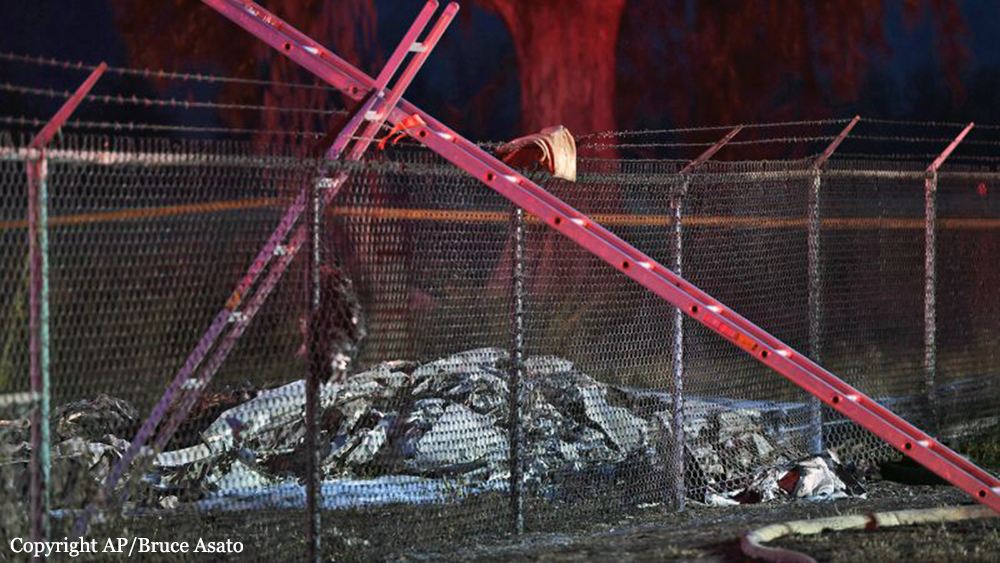
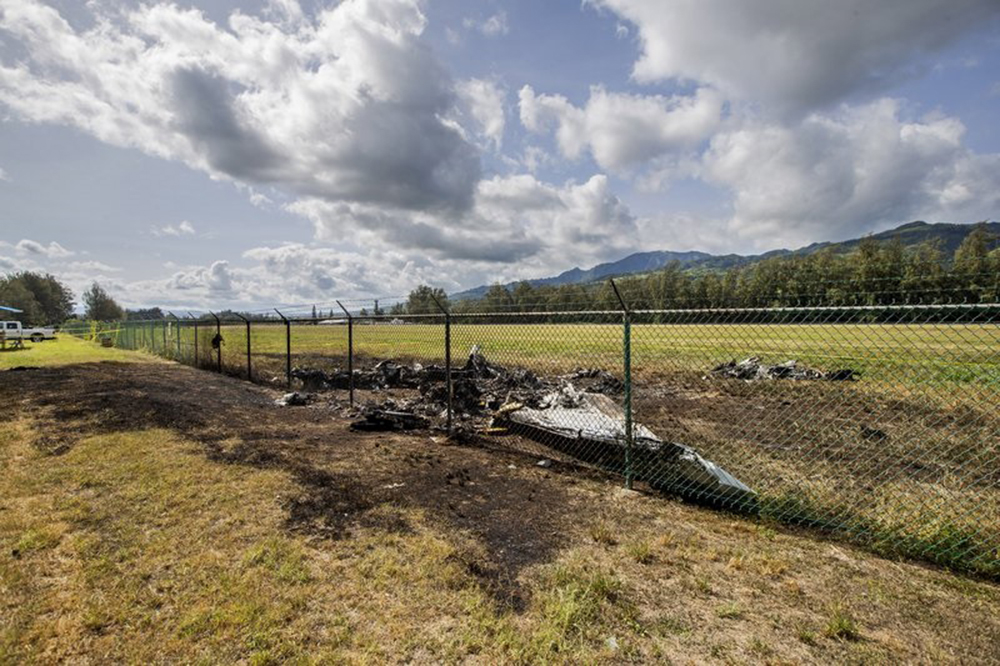

Crash of a Beechcraft C90B King Air in Ipumirim: 1 killed
Date & Time:
Sep 15, 2018 at 1200 LT
Registration:
PR-RFB
Survivors:
No
Schedule:
Florianópolis – Chapecó
MSN:
LJ-1546
YOM:
1999
Crew on board:
1
Crew fatalities:
Pax on board:
0
Pax fatalities:
Other fatalities:
Total fatalities:
1
Circumstances:
The pilot departed Florianópolis-Hercílio Luz Airport at 1100LT on a flight to Chapecó. Following an uneventful flight, the pilot initiated the descent to Chapecó-Serafim Enoss Bertasco Airport but encountered marginal weather conditions with limited visibility. While descending under VFR mode, the aircraft collided with trees and crashed in a dense wooded area located in Ipumirim, some 50 km east of Chapecó Airport, bursting into flames. The aircraft was destroyed by impact forces and a post crash fire and the pilot, sole occupant, was killed.
Probable cause:
Controlled flight into terrain.
Contributing factors.
- Attitude - contributed
The fact that the pilot continued the descent visually, not performing the instrument approach according to the IFR flight plan, denoted disregard of the real risks of this action. Thus, his attitude contributed to the inappropriate approach that culminated in the collision with the ground.
- Adverse weather conditions - contributed
Despite the aerodrome presenting ceiling and visibility conditions favorable for visual flight at the time of the accident, it was verified that there was dense fog covering the entire region near the impact site and, therefore, the IFR rules, which determined a minimum altitude of 5,000 ft, should have been observed.
- Emotional state - undetermined
Some events in the pilot's personal life were negatively affecting his emotional state. In addition, the pilot appeared to be more introspective in the period leading up to the accident.
Thus, it is possible that his performance was impaired due to his emotional state.
- External influences - undetermined
The pilot was possibly experiencing difficult events in his personal life. These events could have negatively affected his emotional state.
Thus, the pilot's way of thinking, reacting and performance at work may have been impacted by factors external to work.
- Motivation - undetermined
The pilot intended to return home because he would be celebrating his birthday and that of his stepdaughter.
The audio recording of the pilot's telephony with the GND-FL, shows that he insisted to accelerate his take-off, denoting a possible high motivation focused on fulfilling his eagerness to accomplish the flight. This condition may have influenced the flight performance.
- Decision making process - contributed
The choice to continue the descent without considering the IFR rules, based on an inadequate judgment of the meteorological conditions, revealed the pilot's difficulties to perceive, analyze, choose alternatives and act adequately in that situation.
Contributing factors.
- Attitude - contributed
The fact that the pilot continued the descent visually, not performing the instrument approach according to the IFR flight plan, denoted disregard of the real risks of this action. Thus, his attitude contributed to the inappropriate approach that culminated in the collision with the ground.
- Adverse weather conditions - contributed
Despite the aerodrome presenting ceiling and visibility conditions favorable for visual flight at the time of the accident, it was verified that there was dense fog covering the entire region near the impact site and, therefore, the IFR rules, which determined a minimum altitude of 5,000 ft, should have been observed.
- Emotional state - undetermined
Some events in the pilot's personal life were negatively affecting his emotional state. In addition, the pilot appeared to be more introspective in the period leading up to the accident.
Thus, it is possible that his performance was impaired due to his emotional state.
- External influences - undetermined
The pilot was possibly experiencing difficult events in his personal life. These events could have negatively affected his emotional state.
Thus, the pilot's way of thinking, reacting and performance at work may have been impacted by factors external to work.
- Motivation - undetermined
The pilot intended to return home because he would be celebrating his birthday and that of his stepdaughter.
The audio recording of the pilot's telephony with the GND-FL, shows that he insisted to accelerate his take-off, denoting a possible high motivation focused on fulfilling his eagerness to accomplish the flight. This condition may have influenced the flight performance.
- Decision making process - contributed
The choice to continue the descent without considering the IFR rules, based on an inadequate judgment of the meteorological conditions, revealed the pilot's difficulties to perceive, analyze, choose alternatives and act adequately in that situation.
Final Report:




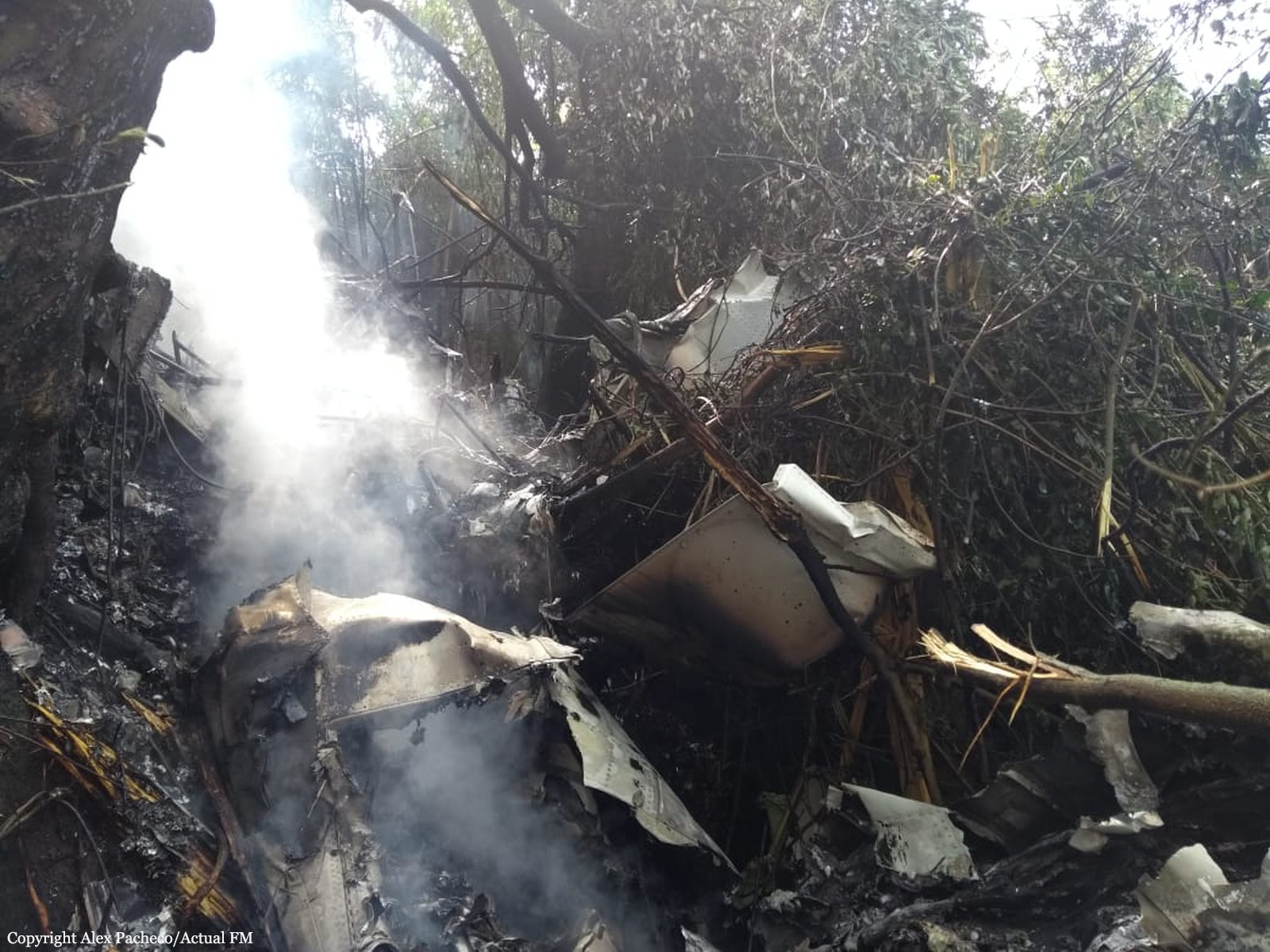

Crash of a Beechcraft C90GTi King Air in Vila Rica
Date & Time:
Sep 5, 2018 at 1120 LT
Registration:
PR-GVJ
Survivors:
Yes
Schedule:
Belo Horizonte – Confresa
MSN:
LJ-2145
YOM:
2017
Crew on board:
1
Crew fatalities:
Pax on board:
5
Pax fatalities:
Other fatalities:
Total fatalities:
0
Circumstances:
The twin engine airplane departed Belo Horizonte-Pampulha-Carlos Drummond de Andrade Airport at 0820LT on a private flight to Confresa, carrying five passenger and one pilot. While descending to Confresa, the pilot decided to fly directly to the farm of the owner (Fazenda Angola) located in Vila Rica, about 80 km northeast of Confresa Airport. On final approach, the aircraft was too low when it struck the surface of a lake then its bank. On impact, the undercarriage were torn off and the aircraft crash landed and came to rest on its belly. There was no fire. All six occupants were injured, one seriously. The aircraft was damaged beyond repair.
Probable cause:
The pilot descended too low on approach to an umprepared terrain.
Contributing Factors:
- Attitude,
- Command application,
- Pilot judgment,
- Decision making process,
- Lack of adherence to regulations established by the authority of Brazilian civil aviation.
Contributing Factors:
- Attitude,
- Command application,
- Pilot judgment,
- Decision making process,
- Lack of adherence to regulations established by the authority of Brazilian civil aviation.
Final Report:
